Transfer Pricing Strategies: A Detailed Look at Market & Marginal Cost
VerifiedAdded on 2023/06/13
|9
|2555
|212
Report
AI Summary
This report provides a comprehensive analysis of transfer pricing, focusing on market-based and marginal cost methods. It defines transfer pricing as the pricing of goods and services exchanged between businesses under shared administration, highlighting its importance in allocating earnings across subsidiaries. The report delves into how financial institutions use transfer pricing to split net interest revenue across business divisions. It discusses market-based transfer pricing, where prices are determined by comparing current market prices, and marginal cost transfer pricing, where prices are set at or slightly above the variable cost of manufacturing. The report critically examines the advantages and disadvantages of each method, including their impact on profitability, competitiveness, and decision-making, concluding that while marginal cost pricing may be suitable under specific circumstances, market-based pricing is generally preferable.
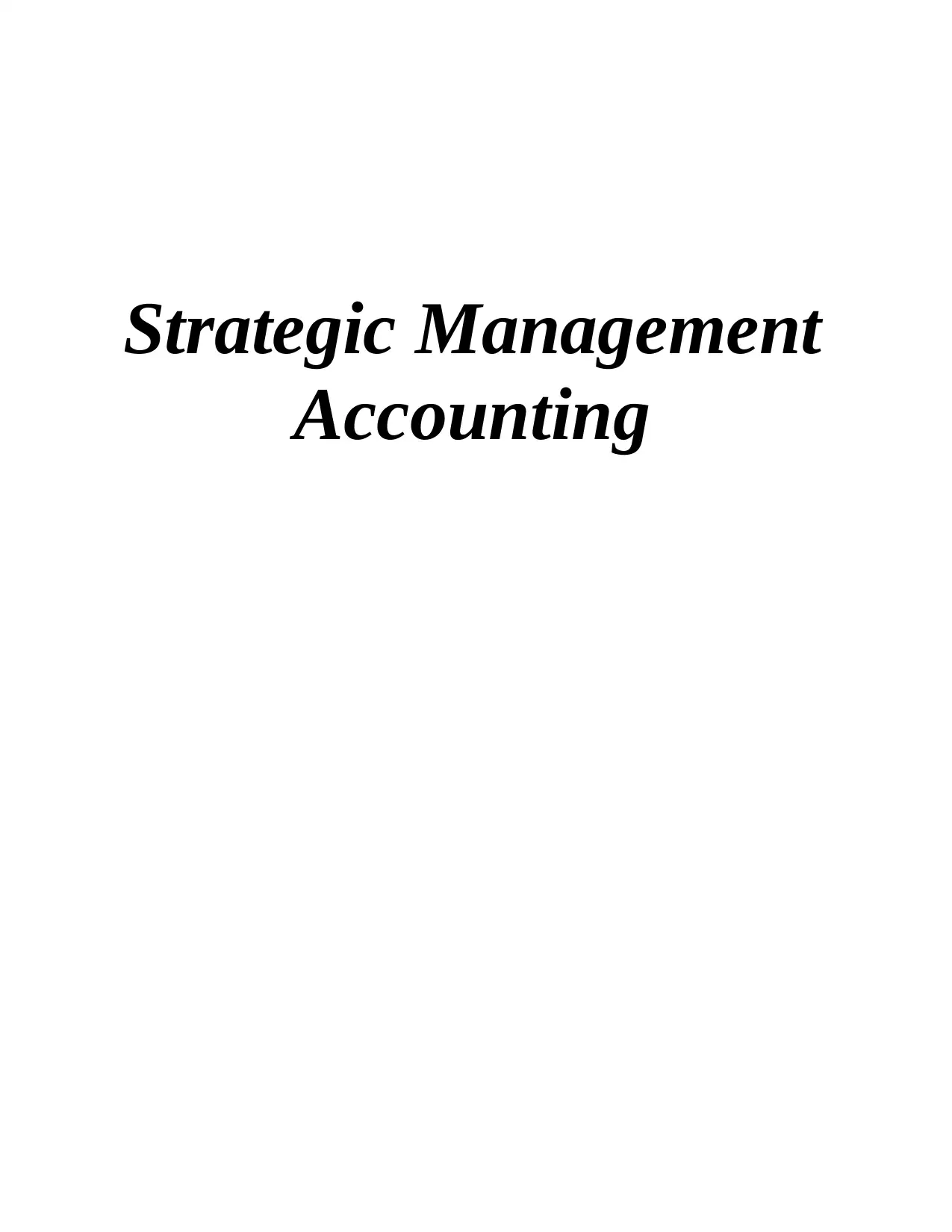
Strategic Management
Accounting
Accounting
Paraphrase This Document
Need a fresh take? Get an instant paraphrase of this document with our AI Paraphraser
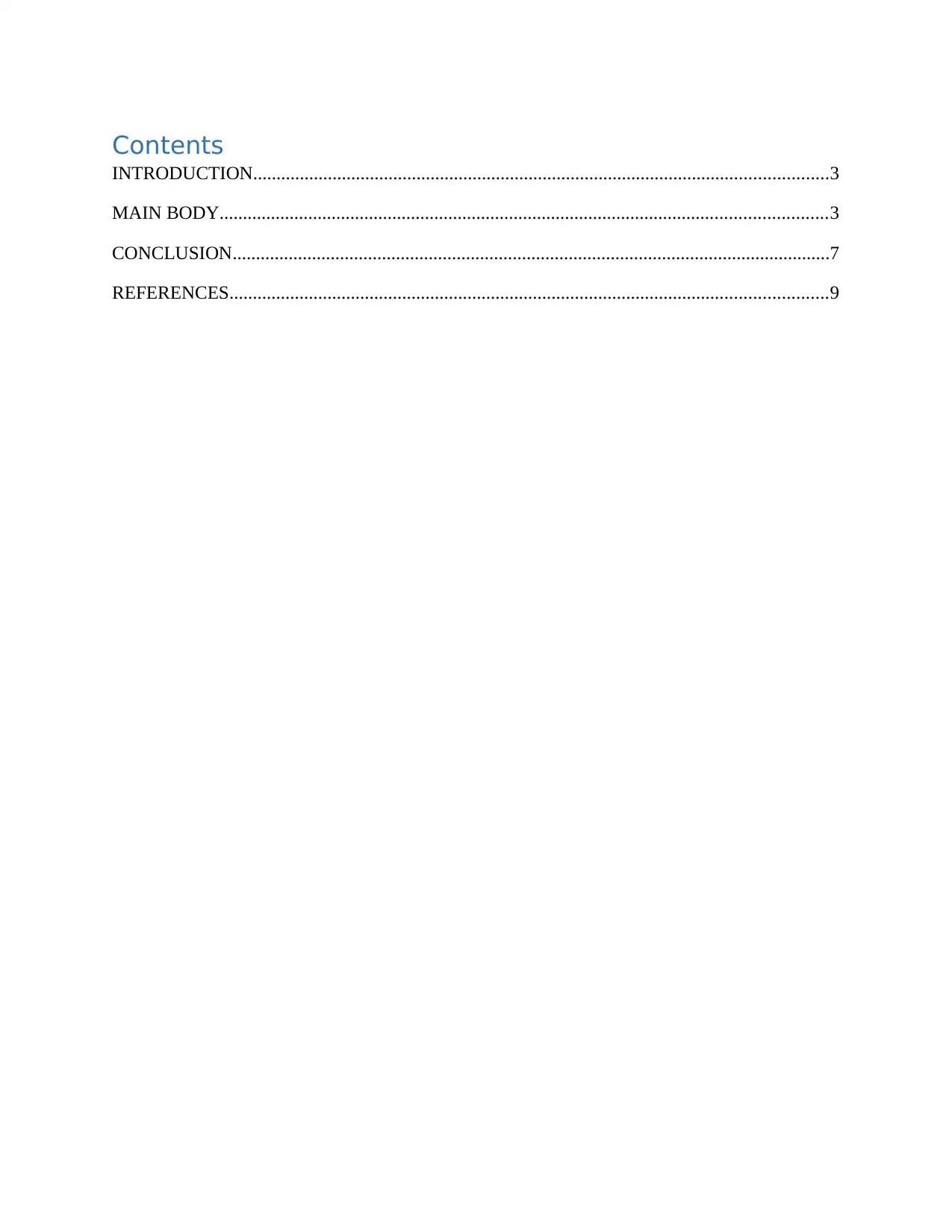
Contents
INTRODUCTION...........................................................................................................................3
MAIN BODY..................................................................................................................................3
CONCLUSION................................................................................................................................7
REFERENCES................................................................................................................................9
INTRODUCTION...........................................................................................................................3
MAIN BODY..................................................................................................................................3
CONCLUSION................................................................................................................................7
REFERENCES................................................................................................................................9
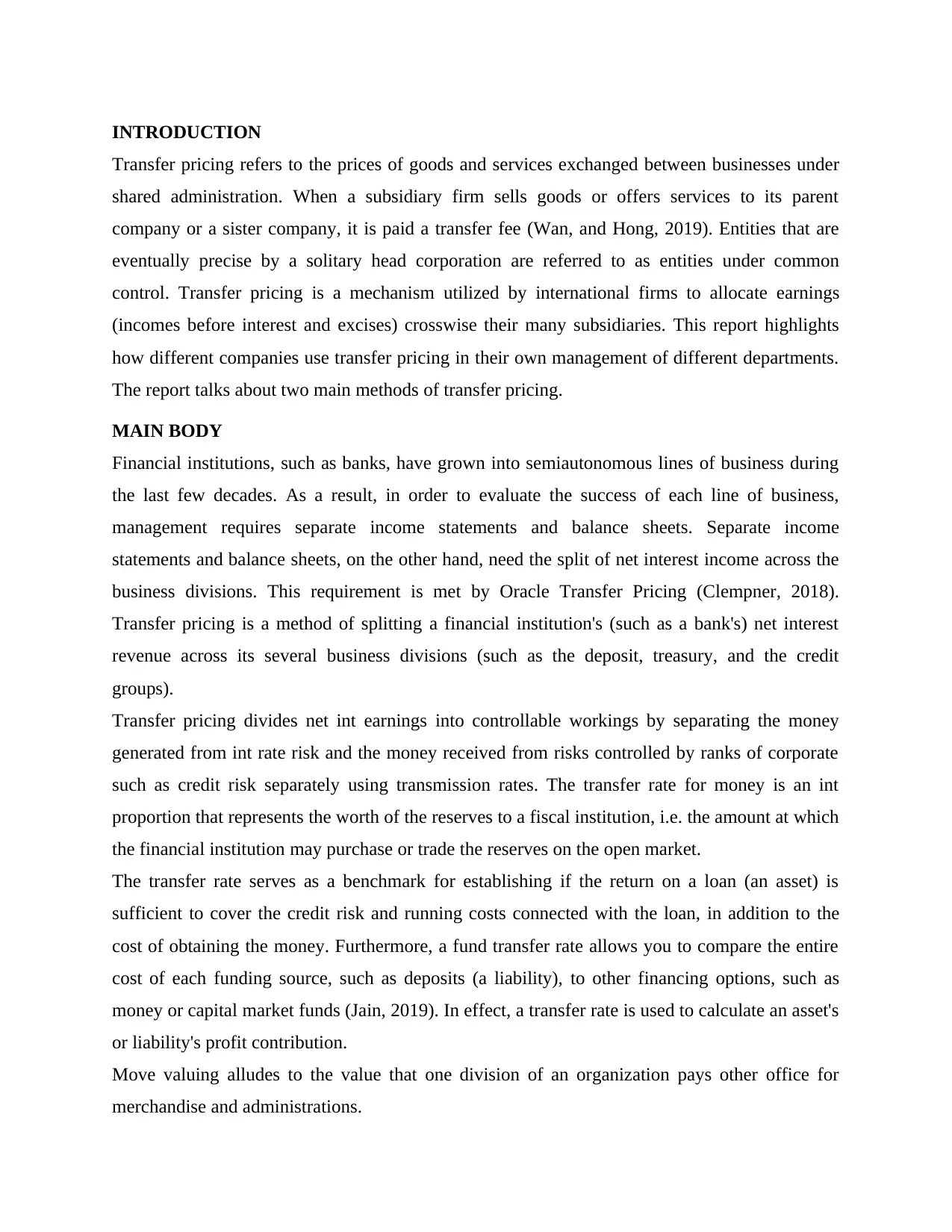
INTRODUCTION
Transfer pricing refers to the prices of goods and services exchanged between businesses under
shared administration. When a subsidiary firm sells goods or offers services to its parent
company or a sister company, it is paid a transfer fee (Wan, and Hong, 2019). Entities that are
eventually precise by a solitary head corporation are referred to as entities under common
control. Transfer pricing is a mechanism utilized by international firms to allocate earnings
(incomes before interest and excises) crosswise their many subsidiaries. This report highlights
how different companies use transfer pricing in their own management of different departments.
The report talks about two main methods of transfer pricing.
MAIN BODY
Financial institutions, such as banks, have grown into semiautonomous lines of business during
the last few decades. As a result, in order to evaluate the success of each line of business,
management requires separate income statements and balance sheets. Separate income
statements and balance sheets, on the other hand, need the split of net interest income across the
business divisions. This requirement is met by Oracle Transfer Pricing (Clempner, 2018).
Transfer pricing is a method of splitting a financial institution's (such as a bank's) net interest
revenue across its several business divisions (such as the deposit, treasury, and the credit
groups).
Transfer pricing divides net int earnings into controllable workings by separating the money
generated from int rate risk and the money received from risks controlled by ranks of corporate
such as credit risk separately using transmission rates. The transfer rate for money is an int
proportion that represents the worth of the reserves to a fiscal institution, i.e. the amount at which
the financial institution may purchase or trade the reserves on the open market.
The transfer rate serves as a benchmark for establishing if the return on a loan (an asset) is
sufficient to cover the credit risk and running costs connected with the loan, in addition to the
cost of obtaining the money. Furthermore, a fund transfer rate allows you to compare the entire
cost of each funding source, such as deposits (a liability), to other financing options, such as
money or capital market funds (Jain, 2019). In effect, a transfer rate is used to calculate an asset's
or liability's profit contribution.
Move valuing alludes to the value that one division of an organization pays other office for
merchandise and administrations.
Transfer pricing refers to the prices of goods and services exchanged between businesses under
shared administration. When a subsidiary firm sells goods or offers services to its parent
company or a sister company, it is paid a transfer fee (Wan, and Hong, 2019). Entities that are
eventually precise by a solitary head corporation are referred to as entities under common
control. Transfer pricing is a mechanism utilized by international firms to allocate earnings
(incomes before interest and excises) crosswise their many subsidiaries. This report highlights
how different companies use transfer pricing in their own management of different departments.
The report talks about two main methods of transfer pricing.
MAIN BODY
Financial institutions, such as banks, have grown into semiautonomous lines of business during
the last few decades. As a result, in order to evaluate the success of each line of business,
management requires separate income statements and balance sheets. Separate income
statements and balance sheets, on the other hand, need the split of net interest income across the
business divisions. This requirement is met by Oracle Transfer Pricing (Clempner, 2018).
Transfer pricing is a method of splitting a financial institution's (such as a bank's) net interest
revenue across its several business divisions (such as the deposit, treasury, and the credit
groups).
Transfer pricing divides net int earnings into controllable workings by separating the money
generated from int rate risk and the money received from risks controlled by ranks of corporate
such as credit risk separately using transmission rates. The transfer rate for money is an int
proportion that represents the worth of the reserves to a fiscal institution, i.e. the amount at which
the financial institution may purchase or trade the reserves on the open market.
The transfer rate serves as a benchmark for establishing if the return on a loan (an asset) is
sufficient to cover the credit risk and running costs connected with the loan, in addition to the
cost of obtaining the money. Furthermore, a fund transfer rate allows you to compare the entire
cost of each funding source, such as deposits (a liability), to other financing options, such as
money or capital market funds (Jain, 2019). In effect, a transfer rate is used to calculate an asset's
or liability's profit contribution.
Move valuing alludes to the value that one division of an organization pays other office for
merchandise and administrations.
⊘ This is a preview!⊘
Do you want full access?
Subscribe today to unlock all pages.

Trusted by 1+ million students worldwide

Costs for items and administrations sold between auxiliaries, partners, or firms under shared
administration that are all essential for a similar bigger still up in the air by move valuing. Move
estimating permits organizations to get a good deal on charges, despite the fact that charge
specialists might address such cases. Transfer pricing strategies offer a firm with a variety of tax
benefits, despite the fact that regulatory agencies typically frown on manipulating transfer prices
to save taxes. Viable however lawful exchange estimating exploits fluctuating duty systems in
various nations by raising exchange costs for items and administrations delivered in nations with
lower charge rates. Organizations can likewise get a good deal on related exchanges by staying
away from taxes on universally exchanged items and administrations determined conditions
(Pinskaya, Alaverdyan, and Milogolov, 2018). Global duty norms are represented by the
Organization for Economic Cooperation and Development (OECD), and OECD-certify
inspecting firms analyze and review MNC monetary reports likewise. Following is the
discussion about the two major methods of Transfer Pricing:
Market based transfer prices: When a corporation utilises market-based transfer
pricing, it determines the selling price by comparing current market prices for the items
or services it wants to sell. For corporations with a small number of subsidiaries, simple
supply chains, in which commodities are moved from one division to another, function
effectively. But what about large corporations that control a slew of smaller corporations,
each of which is responsible for its own accounting? Do accountants merely act as though
the products appeared or vanished out of nowhere? In these cases, companies must use
transfer pricing, which is the process of establishing how to charge different divisions for
different goods. Many people believe that market-based transfer pricing, which bases
item costs on what you'd get on the open market, is the best pricing system. Market-based
transfer pricing is perhaps the most easy way for laying out the value that will be paid
between divisions of a similar organization. It assesses the cost of the items if they were
acquired on the open market. As a consequence, both subsidiaries operate as if they were
selling or acquiring things from a third-party vendor.
ADVANTAGES:
This strategy is great for expanding income as well as intensity. Contenders are used as
benchmarks, permitting the organization to pick the most practical valuing technique. By
offering lower prices than competitors, the company should be able to attract more
administration that are all essential for a similar bigger still up in the air by move valuing. Move
estimating permits organizations to get a good deal on charges, despite the fact that charge
specialists might address such cases. Transfer pricing strategies offer a firm with a variety of tax
benefits, despite the fact that regulatory agencies typically frown on manipulating transfer prices
to save taxes. Viable however lawful exchange estimating exploits fluctuating duty systems in
various nations by raising exchange costs for items and administrations delivered in nations with
lower charge rates. Organizations can likewise get a good deal on related exchanges by staying
away from taxes on universally exchanged items and administrations determined conditions
(Pinskaya, Alaverdyan, and Milogolov, 2018). Global duty norms are represented by the
Organization for Economic Cooperation and Development (OECD), and OECD-certify
inspecting firms analyze and review MNC monetary reports likewise. Following is the
discussion about the two major methods of Transfer Pricing:
Market based transfer prices: When a corporation utilises market-based transfer
pricing, it determines the selling price by comparing current market prices for the items
or services it wants to sell. For corporations with a small number of subsidiaries, simple
supply chains, in which commodities are moved from one division to another, function
effectively. But what about large corporations that control a slew of smaller corporations,
each of which is responsible for its own accounting? Do accountants merely act as though
the products appeared or vanished out of nowhere? In these cases, companies must use
transfer pricing, which is the process of establishing how to charge different divisions for
different goods. Many people believe that market-based transfer pricing, which bases
item costs on what you'd get on the open market, is the best pricing system. Market-based
transfer pricing is perhaps the most easy way for laying out the value that will be paid
between divisions of a similar organization. It assesses the cost of the items if they were
acquired on the open market. As a consequence, both subsidiaries operate as if they were
selling or acquiring things from a third-party vendor.
ADVANTAGES:
This strategy is great for expanding income as well as intensity. Contenders are used as
benchmarks, permitting the organization to pick the most practical valuing technique. By
offering lower prices than competitors, the company should be able to attract more
Paraphrase This Document
Need a fresh take? Get an instant paraphrase of this document with our AI Paraphraser
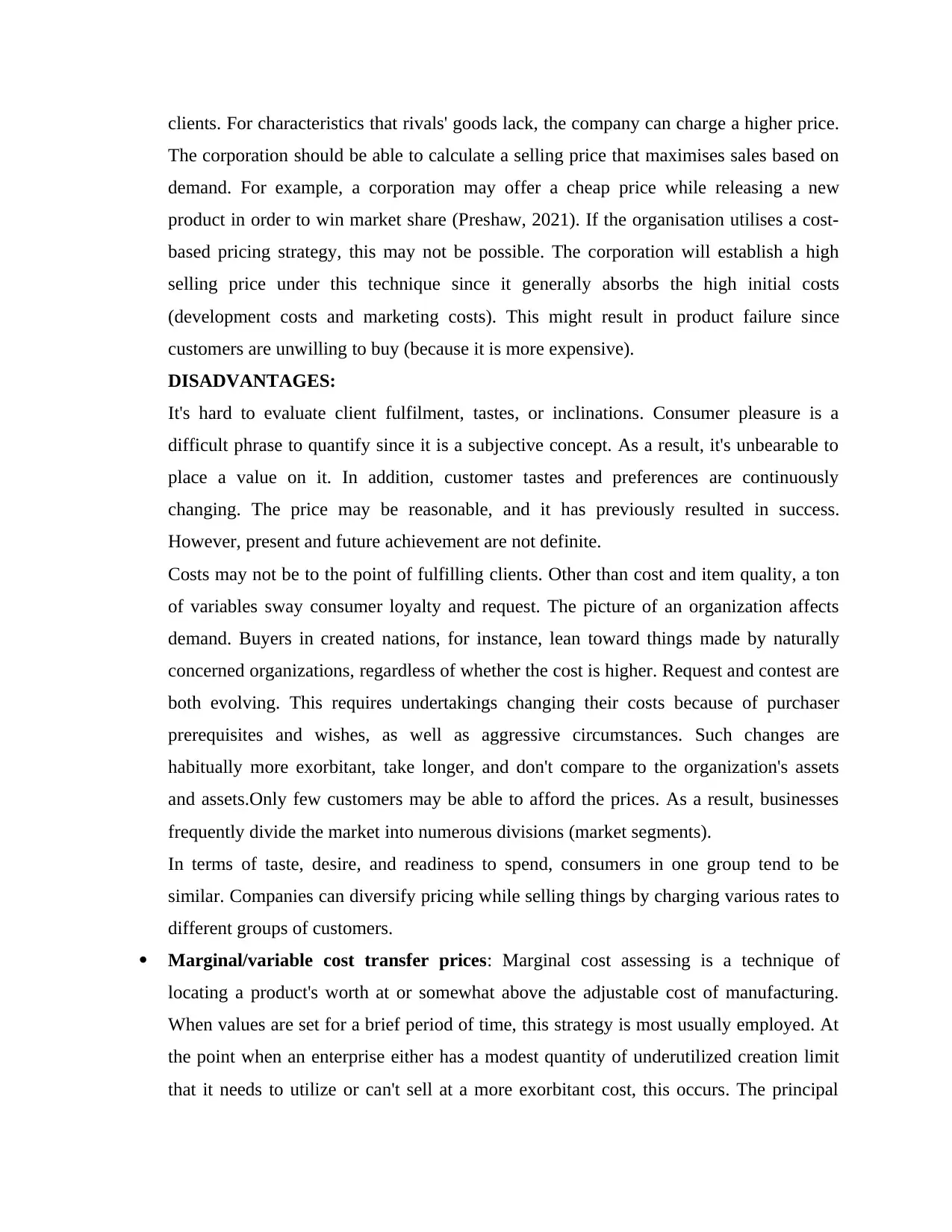
clients. For characteristics that rivals' goods lack, the company can charge a higher price.
The corporation should be able to calculate a selling price that maximises sales based on
demand. For example, a corporation may offer a cheap price while releasing a new
product in order to win market share (Preshaw, 2021). If the organisation utilises a cost-
based pricing strategy, this may not be possible. The corporation will establish a high
selling price under this technique since it generally absorbs the high initial costs
(development costs and marketing costs). This might result in product failure since
customers are unwilling to buy (because it is more expensive).
DISADVANTAGES:
It's hard to evaluate client fulfilment, tastes, or inclinations. Consumer pleasure is a
difficult phrase to quantify since it is a subjective concept. As a result, it's unbearable to
place a value on it. In addition, customer tastes and preferences are continuously
changing. The price may be reasonable, and it has previously resulted in success.
However, present and future achievement are not definite.
Costs may not be to the point of fulfilling clients. Other than cost and item quality, a ton
of variables sway consumer loyalty and request. The picture of an organization affects
demand. Buyers in created nations, for instance, lean toward things made by naturally
concerned organizations, regardless of whether the cost is higher. Request and contest are
both evolving. This requires undertakings changing their costs because of purchaser
prerequisites and wishes, as well as aggressive circumstances. Such changes are
habitually more exorbitant, take longer, and don't compare to the organization's assets
and assets.Only few customers may be able to afford the prices. As a result, businesses
frequently divide the market into numerous divisions (market segments).
In terms of taste, desire, and readiness to spend, consumers in one group tend to be
similar. Companies can diversify pricing while selling things by charging various rates to
different groups of customers.
Marginal/variable cost transfer prices: Marginal cost assessing is a technique of
locating a product's worth at or somewhat above the adjustable cost of manufacturing.
When values are set for a brief period of time, this strategy is most usually employed. At
the point when an enterprise either has a modest quantity of underutilized creation limit
that it needs to utilize or can't sell at a more exorbitant cost, this occurs. The principal
The corporation should be able to calculate a selling price that maximises sales based on
demand. For example, a corporation may offer a cheap price while releasing a new
product in order to win market share (Preshaw, 2021). If the organisation utilises a cost-
based pricing strategy, this may not be possible. The corporation will establish a high
selling price under this technique since it generally absorbs the high initial costs
(development costs and marketing costs). This might result in product failure since
customers are unwilling to buy (because it is more expensive).
DISADVANTAGES:
It's hard to evaluate client fulfilment, tastes, or inclinations. Consumer pleasure is a
difficult phrase to quantify since it is a subjective concept. As a result, it's unbearable to
place a value on it. In addition, customer tastes and preferences are continuously
changing. The price may be reasonable, and it has previously resulted in success.
However, present and future achievement are not definite.
Costs may not be to the point of fulfilling clients. Other than cost and item quality, a ton
of variables sway consumer loyalty and request. The picture of an organization affects
demand. Buyers in created nations, for instance, lean toward things made by naturally
concerned organizations, regardless of whether the cost is higher. Request and contest are
both evolving. This requires undertakings changing their costs because of purchaser
prerequisites and wishes, as well as aggressive circumstances. Such changes are
habitually more exorbitant, take longer, and don't compare to the organization's assets
and assets.Only few customers may be able to afford the prices. As a result, businesses
frequently divide the market into numerous divisions (market segments).
In terms of taste, desire, and readiness to spend, consumers in one group tend to be
similar. Companies can diversify pricing while selling things by charging various rates to
different groups of customers.
Marginal/variable cost transfer prices: Marginal cost assessing is a technique of
locating a product's worth at or somewhat above the adjustable cost of manufacturing.
When values are set for a brief period of time, this strategy is most usually employed. At
the point when an enterprise either has a modest quantity of underutilized creation limit
that it needs to utilize or can't sell at a more exorbitant cost, this occurs. The principal
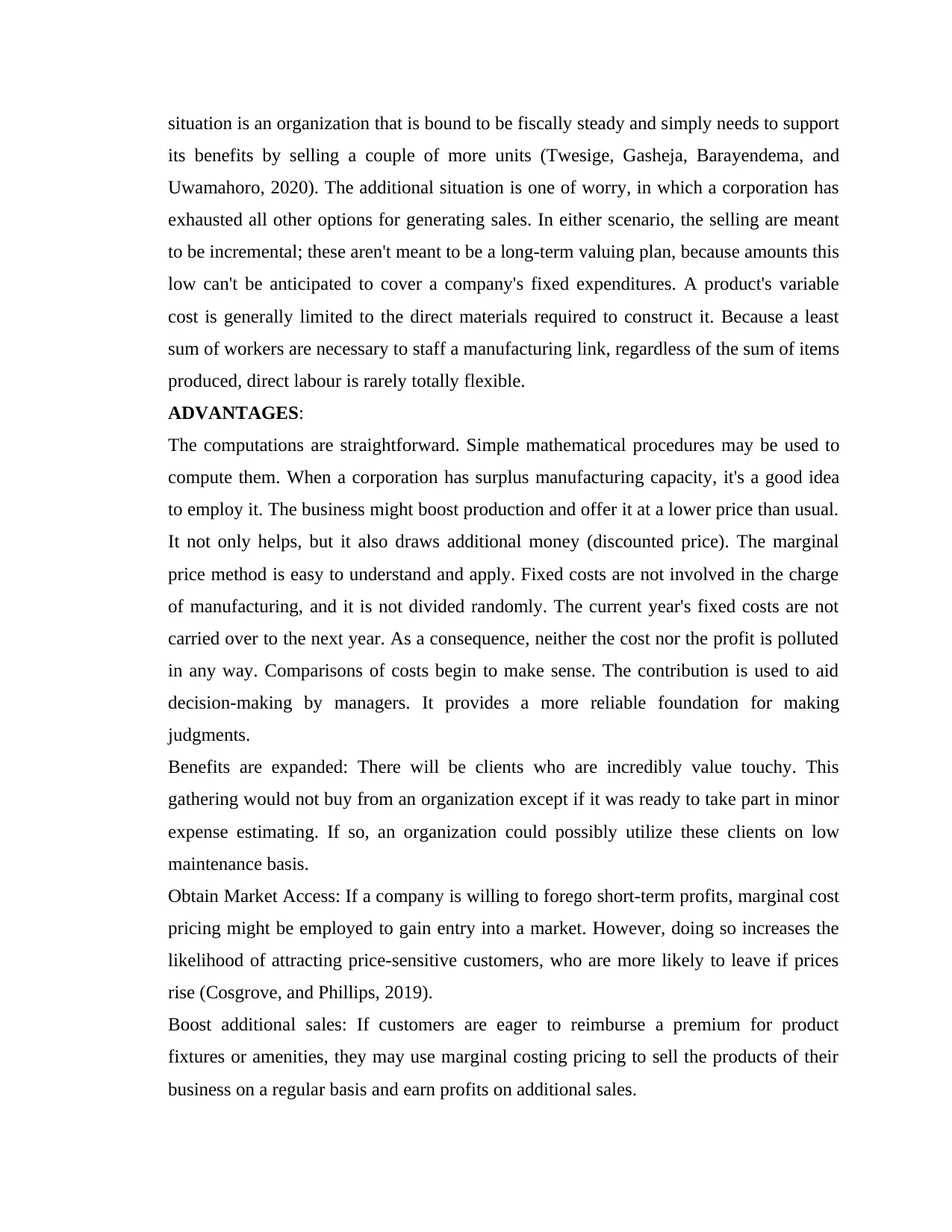
situation is an organization that is bound to be fiscally steady and simply needs to support
its benefits by selling a couple of more units (Twesige, Gasheja, Barayendema, and
Uwamahoro, 2020). The additional situation is one of worry, in which a corporation has
exhausted all other options for generating sales. In either scenario, the selling are meant
to be incremental; these aren't meant to be a long-term valuing plan, because amounts this
low can't be anticipated to cover a company's fixed expenditures. A product's variable
cost is generally limited to the direct materials required to construct it. Because a least
sum of workers are necessary to staff a manufacturing link, regardless of the sum of items
produced, direct labour is rarely totally flexible.
ADVANTAGES:
The computations are straightforward. Simple mathematical procedures may be used to
compute them. When a corporation has surplus manufacturing capacity, it's a good idea
to employ it. The business might boost production and offer it at a lower price than usual.
It not only helps, but it also draws additional money (discounted price). The marginal
price method is easy to understand and apply. Fixed costs are not involved in the charge
of manufacturing, and it is not divided randomly. The current year's fixed costs are not
carried over to the next year. As a consequence, neither the cost nor the profit is polluted
in any way. Comparisons of costs begin to make sense. The contribution is used to aid
decision-making by managers. It provides a more reliable foundation for making
judgments.
Benefits are expanded: There will be clients who are incredibly value touchy. This
gathering would not buy from an organization except if it was ready to take part in minor
expense estimating. If so, an organization could possibly utilize these clients on low
maintenance basis.
Obtain Market Access: If a company is willing to forego short-term profits, marginal cost
pricing might be employed to gain entry into a market. However, doing so increases the
likelihood of attracting price-sensitive customers, who are more likely to leave if prices
rise (Cosgrove, and Phillips, 2019).
Boost additional sales: If customers are eager to reimburse a premium for product
fixtures or amenities, they may use marginal costing pricing to sell the products of their
business on a regular basis and earn profits on additional sales.
its benefits by selling a couple of more units (Twesige, Gasheja, Barayendema, and
Uwamahoro, 2020). The additional situation is one of worry, in which a corporation has
exhausted all other options for generating sales. In either scenario, the selling are meant
to be incremental; these aren't meant to be a long-term valuing plan, because amounts this
low can't be anticipated to cover a company's fixed expenditures. A product's variable
cost is generally limited to the direct materials required to construct it. Because a least
sum of workers are necessary to staff a manufacturing link, regardless of the sum of items
produced, direct labour is rarely totally flexible.
ADVANTAGES:
The computations are straightforward. Simple mathematical procedures may be used to
compute them. When a corporation has surplus manufacturing capacity, it's a good idea
to employ it. The business might boost production and offer it at a lower price than usual.
It not only helps, but it also draws additional money (discounted price). The marginal
price method is easy to understand and apply. Fixed costs are not involved in the charge
of manufacturing, and it is not divided randomly. The current year's fixed costs are not
carried over to the next year. As a consequence, neither the cost nor the profit is polluted
in any way. Comparisons of costs begin to make sense. The contribution is used to aid
decision-making by managers. It provides a more reliable foundation for making
judgments.
Benefits are expanded: There will be clients who are incredibly value touchy. This
gathering would not buy from an organization except if it was ready to take part in minor
expense estimating. If so, an organization could possibly utilize these clients on low
maintenance basis.
Obtain Market Access: If a company is willing to forego short-term profits, marginal cost
pricing might be employed to gain entry into a market. However, doing so increases the
likelihood of attracting price-sensitive customers, who are more likely to leave if prices
rise (Cosgrove, and Phillips, 2019).
Boost additional sales: If customers are eager to reimburse a premium for product
fixtures or amenities, they may use marginal costing pricing to sell the products of their
business on a regular basis and earn profits on additional sales.
⊘ This is a preview!⊘
Do you want full access?
Subscribe today to unlock all pages.

Trusted by 1+ million students worldwide
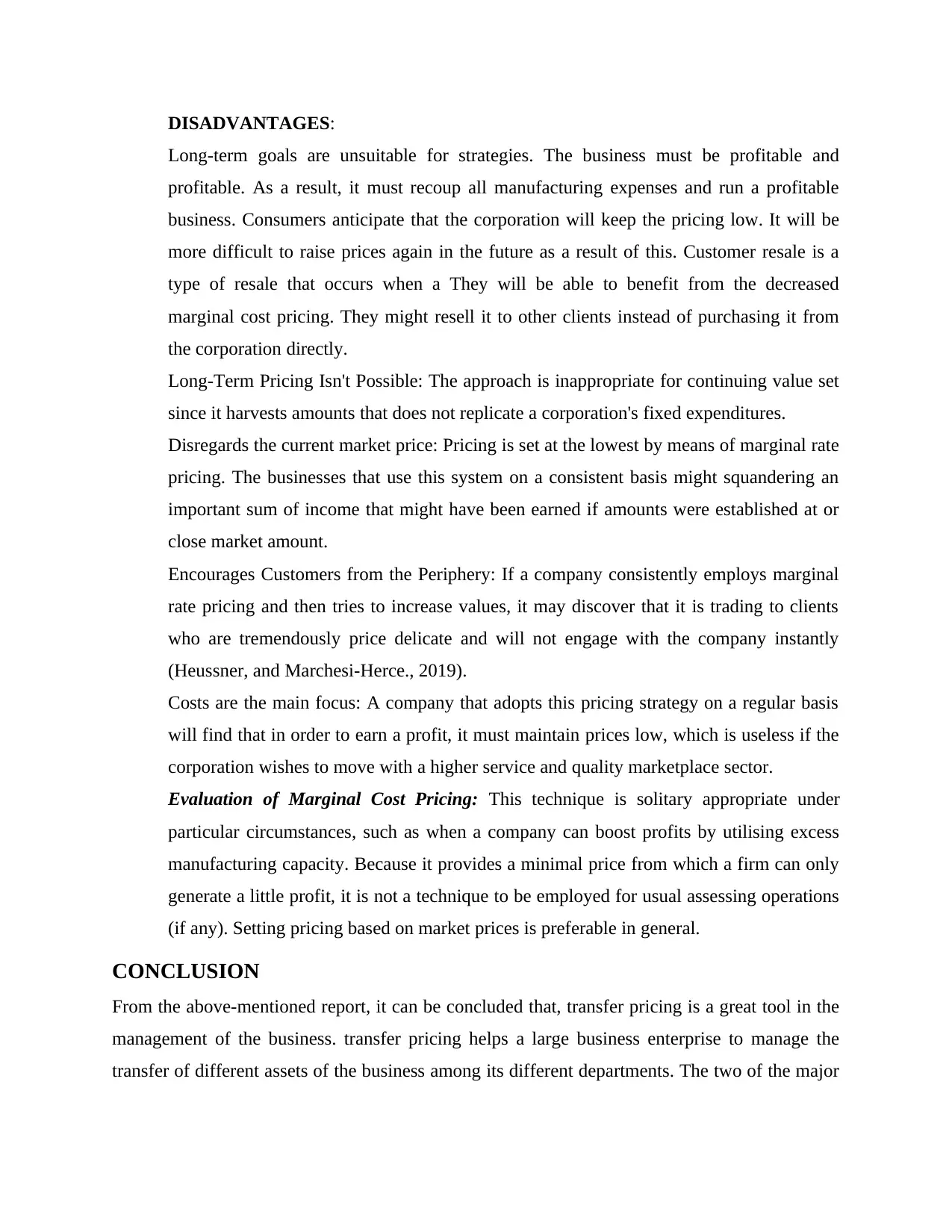
DISADVANTAGES:
Long-term goals are unsuitable for strategies. The business must be profitable and
profitable. As a result, it must recoup all manufacturing expenses and run a profitable
business. Consumers anticipate that the corporation will keep the pricing low. It will be
more difficult to raise prices again in the future as a result of this. Customer resale is a
type of resale that occurs when a They will be able to benefit from the decreased
marginal cost pricing. They might resell it to other clients instead of purchasing it from
the corporation directly.
Long-Term Pricing Isn't Possible: The approach is inappropriate for continuing value set
since it harvests amounts that does not replicate a corporation's fixed expenditures.
Disregards the current market price: Pricing is set at the lowest by means of marginal rate
pricing. The businesses that use this system on a consistent basis might squandering an
important sum of income that might have been earned if amounts were established at or
close market amount.
Encourages Customers from the Periphery: If a company consistently employs marginal
rate pricing and then tries to increase values, it may discover that it is trading to clients
who are tremendously price delicate and will not engage with the company instantly
(Heussner, and Marchesi-Herce., 2019).
Costs are the main focus: A company that adopts this pricing strategy on a regular basis
will find that in order to earn a profit, it must maintain prices low, which is useless if the
corporation wishes to move with a higher service and quality marketplace sector.
Evaluation of Marginal Cost Pricing: This technique is solitary appropriate under
particular circumstances, such as when a company can boost profits by utilising excess
manufacturing capacity. Because it provides a minimal price from which a firm can only
generate a little profit, it is not a technique to be employed for usual assessing operations
(if any). Setting pricing based on market prices is preferable in general.
CONCLUSION
From the above-mentioned report, it can be concluded that, transfer pricing is a great tool in the
management of the business. transfer pricing helps a large business enterprise to manage the
transfer of different assets of the business among its different departments. The two of the major
Long-term goals are unsuitable for strategies. The business must be profitable and
profitable. As a result, it must recoup all manufacturing expenses and run a profitable
business. Consumers anticipate that the corporation will keep the pricing low. It will be
more difficult to raise prices again in the future as a result of this. Customer resale is a
type of resale that occurs when a They will be able to benefit from the decreased
marginal cost pricing. They might resell it to other clients instead of purchasing it from
the corporation directly.
Long-Term Pricing Isn't Possible: The approach is inappropriate for continuing value set
since it harvests amounts that does not replicate a corporation's fixed expenditures.
Disregards the current market price: Pricing is set at the lowest by means of marginal rate
pricing. The businesses that use this system on a consistent basis might squandering an
important sum of income that might have been earned if amounts were established at or
close market amount.
Encourages Customers from the Periphery: If a company consistently employs marginal
rate pricing and then tries to increase values, it may discover that it is trading to clients
who are tremendously price delicate and will not engage with the company instantly
(Heussner, and Marchesi-Herce., 2019).
Costs are the main focus: A company that adopts this pricing strategy on a regular basis
will find that in order to earn a profit, it must maintain prices low, which is useless if the
corporation wishes to move with a higher service and quality marketplace sector.
Evaluation of Marginal Cost Pricing: This technique is solitary appropriate under
particular circumstances, such as when a company can boost profits by utilising excess
manufacturing capacity. Because it provides a minimal price from which a firm can only
generate a little profit, it is not a technique to be employed for usual assessing operations
(if any). Setting pricing based on market prices is preferable in general.
CONCLUSION
From the above-mentioned report, it can be concluded that, transfer pricing is a great tool in the
management of the business. transfer pricing helps a large business enterprise to manage the
transfer of different assets of the business among its different departments. The two of the major
Paraphrase This Document
Need a fresh take? Get an instant paraphrase of this document with our AI Paraphraser

approaches of allocation pricing are marginal cost-based transfer pricing and market-based
transfer pricing. These two methods are critically discussed in the above report.
transfer pricing. These two methods are critically discussed in the above report.
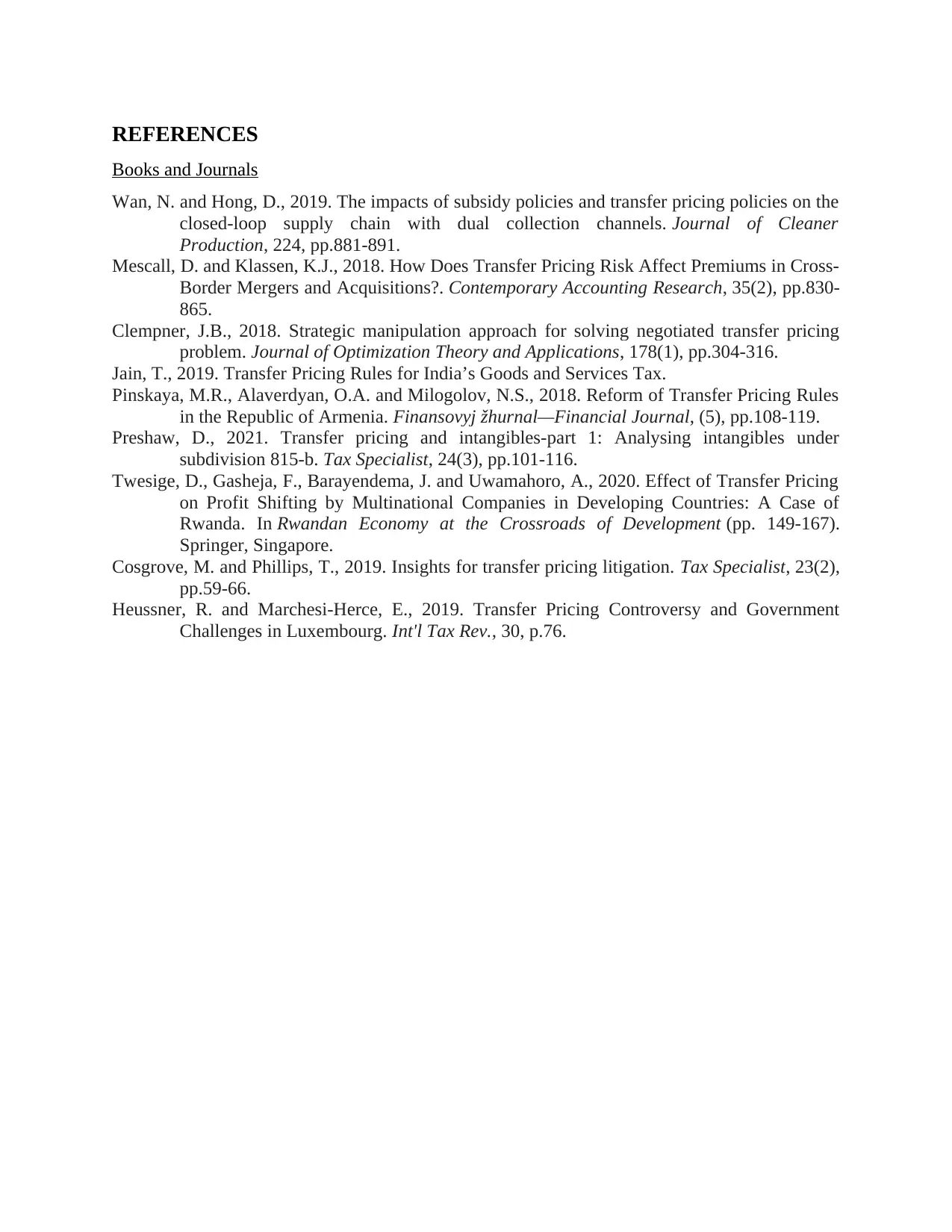
REFERENCES
Books and Journals
Wan, N. and Hong, D., 2019. The impacts of subsidy policies and transfer pricing policies on the
closed-loop supply chain with dual collection channels. Journal of Cleaner
Production, 224, pp.881-891.
Mescall, D. and Klassen, K.J., 2018. How Does Transfer Pricing Risk Affect Premiums in Cross‐
Border Mergers and Acquisitions?. Contemporary Accounting Research, 35(2), pp.830-
865.
Clempner, J.B., 2018. Strategic manipulation approach for solving negotiated transfer pricing
problem. Journal of Optimization Theory and Applications, 178(1), pp.304-316.
Jain, T., 2019. Transfer Pricing Rules for India’s Goods and Services Tax.
Pinskaya, M.R., Alaverdyan, O.A. and Milogolov, N.S., 2018. Reform of Transfer Pricing Rules
in the Republic of Armenia. Finansovyj žhurnal—Financial Journal, (5), pp.108-119.
Preshaw, D., 2021. Transfer pricing and intangibles-part 1: Analysing intangibles under
subdivision 815-b. Tax Specialist, 24(3), pp.101-116.
Twesige, D., Gasheja, F., Barayendema, J. and Uwamahoro, A., 2020. Effect of Transfer Pricing
on Profit Shifting by Multinational Companies in Developing Countries: A Case of
Rwanda. In Rwandan Economy at the Crossroads of Development (pp. 149-167).
Springer, Singapore.
Cosgrove, M. and Phillips, T., 2019. Insights for transfer pricing litigation. Tax Specialist, 23(2),
pp.59-66.
Heussner, R. and Marchesi-Herce, E., 2019. Transfer Pricing Controversy and Government
Challenges in Luxembourg. Int'l Tax Rev., 30, p.76.
Books and Journals
Wan, N. and Hong, D., 2019. The impacts of subsidy policies and transfer pricing policies on the
closed-loop supply chain with dual collection channels. Journal of Cleaner
Production, 224, pp.881-891.
Mescall, D. and Klassen, K.J., 2018. How Does Transfer Pricing Risk Affect Premiums in Cross‐
Border Mergers and Acquisitions?. Contemporary Accounting Research, 35(2), pp.830-
865.
Clempner, J.B., 2018. Strategic manipulation approach for solving negotiated transfer pricing
problem. Journal of Optimization Theory and Applications, 178(1), pp.304-316.
Jain, T., 2019. Transfer Pricing Rules for India’s Goods and Services Tax.
Pinskaya, M.R., Alaverdyan, O.A. and Milogolov, N.S., 2018. Reform of Transfer Pricing Rules
in the Republic of Armenia. Finansovyj žhurnal—Financial Journal, (5), pp.108-119.
Preshaw, D., 2021. Transfer pricing and intangibles-part 1: Analysing intangibles under
subdivision 815-b. Tax Specialist, 24(3), pp.101-116.
Twesige, D., Gasheja, F., Barayendema, J. and Uwamahoro, A., 2020. Effect of Transfer Pricing
on Profit Shifting by Multinational Companies in Developing Countries: A Case of
Rwanda. In Rwandan Economy at the Crossroads of Development (pp. 149-167).
Springer, Singapore.
Cosgrove, M. and Phillips, T., 2019. Insights for transfer pricing litigation. Tax Specialist, 23(2),
pp.59-66.
Heussner, R. and Marchesi-Herce, E., 2019. Transfer Pricing Controversy and Government
Challenges in Luxembourg. Int'l Tax Rev., 30, p.76.
⊘ This is a preview!⊘
Do you want full access?
Subscribe today to unlock all pages.

Trusted by 1+ million students worldwide
1 out of 9
Related Documents
Your All-in-One AI-Powered Toolkit for Academic Success.
+13062052269
info@desklib.com
Available 24*7 on WhatsApp / Email
![[object Object]](/_next/static/media/star-bottom.7253800d.svg)
Unlock your academic potential
Copyright © 2020–2025 A2Z Services. All Rights Reserved. Developed and managed by ZUCOL.





